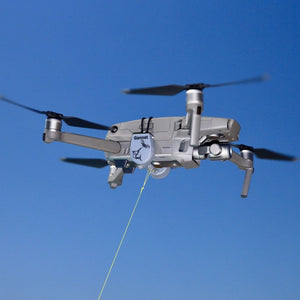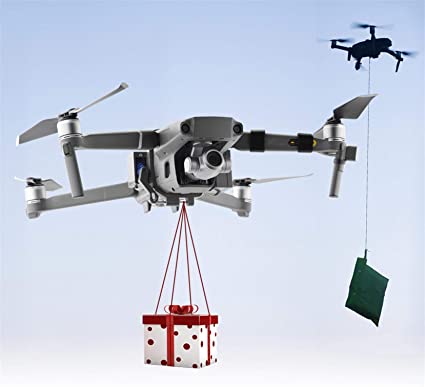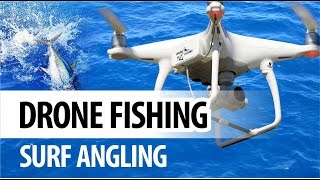
If you're considering using a drone for fishing, you'll likely want to learn more about the regulations. Watch instructional videos about how to fly drones to catch fish. If you are concerned about drone ethics, please read our article. We will be covering some ethical concerns surrounding the use of drones to fish. You can also check out our drone fishing gear guides.
Regulations for drone fishing
It is possible to wonder what regulations apply when you are watching a YouTube video of a drone fishing for fish. Although there are many reasons for following local laws, safety remains the primary concern. To protect both your life and that of the fish, you must follow the correct laws. We'll be discussing the most important regulations in this article and how to ensure that you are following them. Don't forget the International Game Fish Association rules.
Drones cannot fly over public areas such as sporting events or stadiums. They can't carry weapons or stay within a half-mile of sporting events. Operators of drones must maintain a clear view of their aerial equipment at all time. A drone cannot be flown over crowds, stadiums, critical infrastructure, or emergency response vehicles. If you aren't sure what the rules are regarding drone fishing, contact your local law enforcement agency or consult an attorney.

Many states have passed laws that govern the use of drones. However, others have not yet adopted them. Illinois recently passed SB 2167. The bill prohibits the operation of drones within state parks without prior permission. It also defines privacy rights and sets out the rules that drone operators must follow for both recreational and commercial purposes. It also prohibits drones interfering in hunting and other wildlife. These new laws should be completed in the next few years.
Ethical concerns about drone fishing
Drone fishing isn't without controversy. Some companies sell underwater robots that can catch fish. These drones are often equipped with video cameras that show the fishing process. It's remarkably similar as casting a line for a fish. The process of taking a fish from water is different. This type of fishing is not ethically acceptable.
There are many benefits to drones being used for fishing. However, some fishermen feel that drones may be cheating them. Although fishing hasn't changed much in millennia over, the thrill of the chase and the capture of a fish by drones may have an impact on the sport. The use of drones can also pose a problem for conservation. Before you buy a drone for fishing, here are some ethical considerations.

First, drone fishing may not be the best option. Drone fishing can be harmful to the environment and could overfish endangered species. Although some states allow recreational drone fishing, others do not. Drone fishing has its limitations. They must be very expensive. Low-end drones may not be equipped with the necessary GPS functionality, lifting capability, or control range. A second problem is that drone fishing can cause fish to be lost if the line becomes tangled. The third issue is piloting.
FAQ
Is it illegal to fly a drone?
Yes, it is illegal to fly drones in some countries like Australia, Canada and New Zealand. It is legal in countries such as France, Italy Netherlands, Poland and Russia.
Where Are Drones Banned?
The FAA has prohibited drones from flying close to airports or stadiums, sporting events and nuclear power plants. However, they do allow them to fly at night using GPS technology.
Can my drone be flown around my neighbourhood?
Yes! These are also known as UAVs (unmanned aerial vehicle). There are many kinds of drones today. They range from small quadcopters, to large fixed-wing planes. New rules have been issued by the FAA regarding commercial use of UAVs. This means that you can legally fly them for business purposes. However, be aware that flying a UAV near airports may cause interference with air traffic control systems, and you must obtain permission from local authorities before operating one.
What is the difference of a quadcopter and an hexacopter, you ask?
A quadcopter, a four-rotor helicopter, flies just like a helicopter. It has four rotating rotors. A hexacopter is similar to a quadcopter except that it has six rotors instead of four. Hexacopters have more stability and maneuverability than quadcopters.
Statistics
- With the top 10% making over $100/h and the bottom 10% making as low as $10/h. (dronesgator.com)
- According to Indeed, a drone pilot gets paid $25.73 per hour on average in the US. (dronesgator.com)
- According to industry research from ZipRecruiter , there are 10 cities where the typical salary for a Drone Pilot job is above the national average. (dronesgator.com)
External Links
How To
How To Fly Drones For Beginners
A drone refers to a remote-controlled aircraft designed for aerial photography, surveillance and scientific research. Drones have been in use since World War II. DJI introduced their Phantom series of quadcopters in 2010, but commercial use only began in 2010. Many types of drones have been made available since then, from beginner-friendly models such as the Parrot AR Drone 2.0, to high-end multi-rotor craft such as the DJI Mavic Pro.
There are many methods to fly a Drone, including
-
Remote control – This technique uses a control device attached directly to your hands that allows you steer the drone around its flight path. There are two main types: Joysticks (like a radio), and On/Off switches (like an alarm clock).
-
Manual Control- This allows you to control your drone remotely via GPS coordinates. The app will provide instructions and help you to locate the drone.
-
Autonomous Flying - This allows the drone to take over all of the piloting duties. It allows the drone to fly independently without any human intervention. It must have a builtin camera, sensors capable of taking images and data to enable autonomous flight.
-
Triggered flight - This is similar to manual control except that the pilot sets up a preprogrammed route and the drone follows the route until it reaches its destination. Once the programmed route is completed, the drone lands automatically and returns back to the base.
-
Landing Gear - Some drones come equipped with landing gear that allows them to land safely if they lose power or run out of battery during flight.
-
Goggles: Some pilots use goggles in order to protect themselves against debris when operating.
-
Camera - You can capture photos and videos with your drone from the air.
-
Obstacles - Some drones can be equipped with obstacle avoidance systems that prevent them from crashing into obstacles.
-
Speed - Some drones reach speeds exceeding 40 mph.
-
Battery Life: Most drones have a battery life of between 20 and 30 minutes depending on how many power sources you use.
-
Range - Some drones can travel upto 30 miles depending on their models.
-
Power source - Some drones require an external power source; others work off internal batteries.
-
Weight - Some drones are lighter than others, while some models can weigh as much as 4 pounds.
-
Size - From small drones that can be carried in the palm of one's hand to larger drones that weigh over 50 pounds, drones come in a variety of sizes.
-
Price – All drones fall into a price category. These range from expensive models that cost thousands to affordable options that start at 100 dollars.